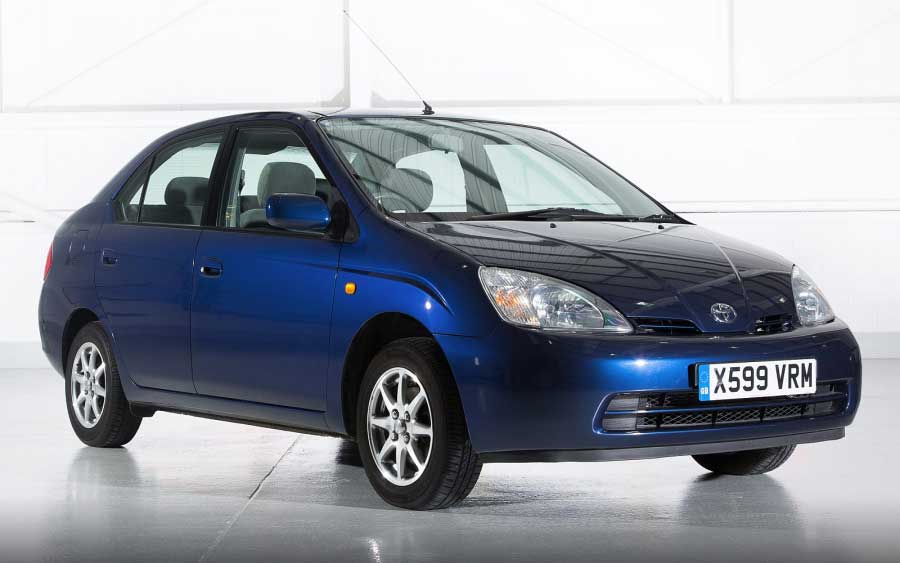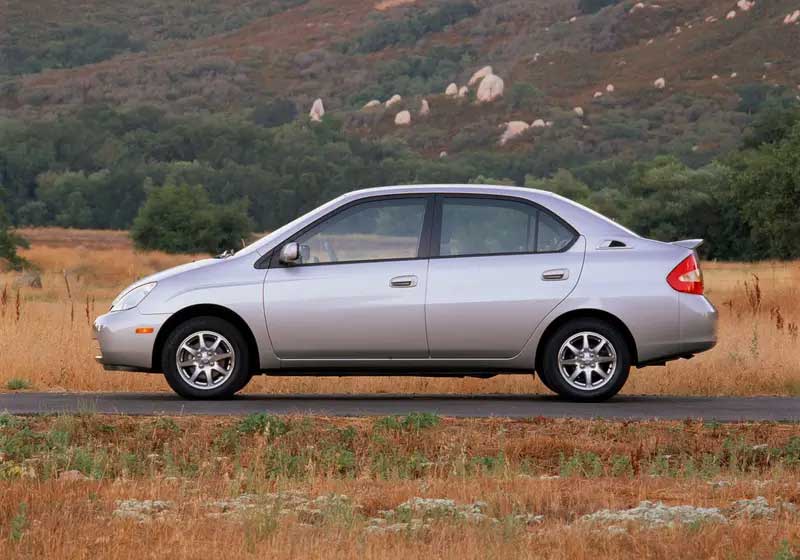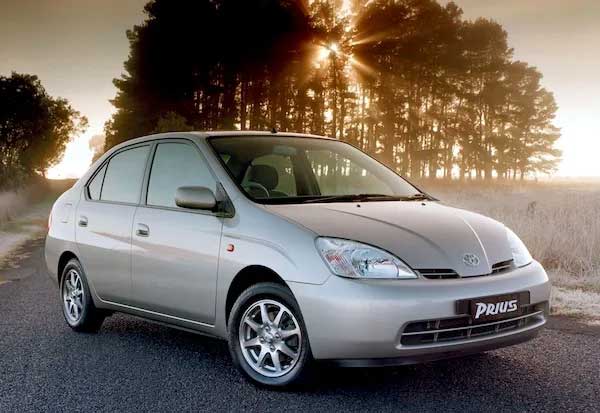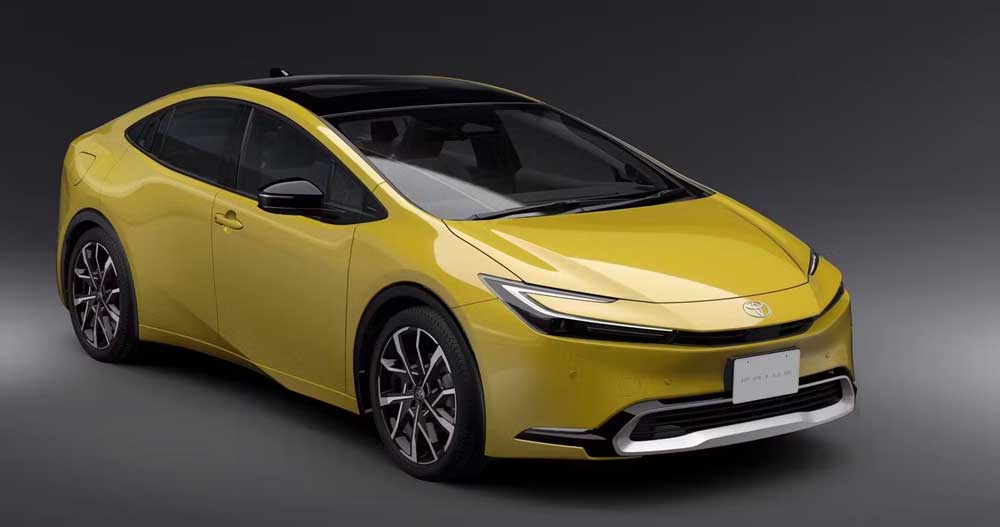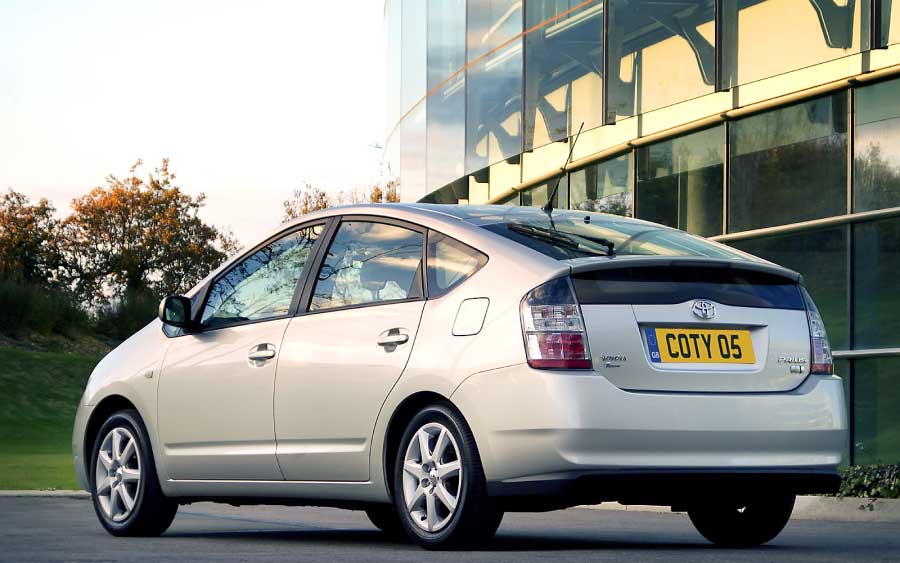The First Car Made from Recycled Materials: The 1990 Toyota Prius

The automotive industry has always been at the forefront of innovation, but in recent decades, it has also become a key player in the global effort to combat climate change and reduce environmental impact. One of the most significant innovations in this regard was the development of the Toyota Prius, the first car made from recycled materials, which was introduced in 1990.
While the Prius is most famous for being the first mass-produced hybrid vehicle, it also marked a turning point in how manufacturers approach sustainability. By incorporating recycled materials in its construction, Toyota set a new standard for eco-conscious automotive manufacturing. This blog post explores the journey of the 1990 Toyota Prius and its pioneering role in making cars more environmentally friendly.
The Concept of Recycled Materials in Car Manufacturing
Before we dive into the specifics of the 1990 Toyota Prius, let’s first understand the concept of recycled materials in car manufacturing. Historically, cars were made primarily from new materials like steel, aluminum, and plastics. However, the environmental impact of using raw materials—especially the energy required for mining, production, and transportation—became a growing concern in the late 20th century.
In response, automakers began experimenting with the idea of using recycled materials—materials that had been previously used in other products and processed for reuse. These materials could include:
- Recycled steel and aluminum: Metal scraps from old vehicles or other sources were melted down and reformed into new parts.
- Recycled plastics: Plastics from bottles, packaging, and other consumer goods could be broken down and repurposed for use in car interiors or exterior parts.
- Other recycled materials: Automakers explored using recycled rubber, glass, and fibers to create a more eco-friendly vehicle.
By incorporating recycled materials, automakers could reduce their carbon footprint, conserve resources, and promote sustainability in the automotive industry.
The 1990 Toyota Prius: A Revolutionary Step in Eco-Friendly Cars
In 1990, Toyota unveiled the Prius, the world’s first car to incorporate recycled materials as part of its construction. While the Prius is best known for being the first hybrid car—a car that combined both gasoline and electric power to improve fuel efficiency—it also set a new benchmark for environmental responsibility in the automotive industry.
The Prius was a pioneering vehicle for several reasons:
- Hybrid Powertrain: The Prius was the first car to combine an internal combustion engine with an electric motor, significantly reducing emissions and improving fuel efficiency compared to conventional cars.
- Use of Recycled Materials: Toyota utilized recycled plastics, recycled metal, and other sustainable materials throughout the vehicle’s construction.
- Fuel Efficiency: The Prius’s hybrid technology helped it achieve superior fuel efficiency, making it one of the most eco-friendly cars on the market at the time.
Though the Prius was initially met with skepticism, its innovative design and eco-friendly approach paved the way for the future of hybrid and electric vehicles.
Recycled Materials in the Prius: What Sets It Apart
The use of recycled materials in the Prius was one of the car’s standout features, setting it apart from other vehicles of the time. Some of the materials Toyota used in the Prius’s construction included:
- Recycled Plastics: Many of the car’s interior parts, such as trim, seats, and dashboard components, were made from recycled plastics, reducing the need for new raw materials.
- Recycled Steel and Aluminum: Toyota incorporated recycled metal in various parts of the Prius, including the body panels and frame, helping to reduce the vehicle’s carbon footprint.
- Recycled Rubber: Some of the Prius’s tires and insulation were made from recycled rubber, sourced from discarded tires and other rubber products.
- Sustainable Manufacturing: Beyond the use of recycled materials, Toyota employed environmentally friendly manufacturing processes that minimized waste and energy consumption during production.
These steps helped reduce the overall environmental impact of the Prius while still maintaining high standards of safety, performance, and durability.
The Impact of the Prius on the Automotive Industry
The introduction of the Prius had a far-reaching impact on the automotive industry, especially when it came to promoting environmentally conscious design and innovation. Key impacts of the Prius include:
- Inspiring the Hybrid Car Movement: The Prius demonstrated that hybrid technology could be practical, efficient, and popular. This encouraged other manufacturers to invest in hybrid technology, leading to the development of hybrid models by companies like Honda, Ford, and Chevrolet.
- Environmental Focus: The Prius helped shift the focus of the automotive industry toward sustainability, prompting companies to explore more eco-friendly technologies, such as electric vehicles (EVs) and the use of renewable materials.
- Government Incentives: The Prius was among the first vehicles to benefit from government incentives aimed at promoting clean energy vehicles, such as tax rebates and grants for environmentally conscious car buyers.
The Evolution of Sustainable Cars
Since the debut of the Prius in 1990, the automotive industry has seen tremendous advancements in sustainable vehicle design. These developments include:
- All-Electric Vehicles (EVs): The rise of electric vehicles, such as the Tesla Model S and the Nissan Leaf, has further pushed the boundaries of sustainable automotive technology.
- Better Battery Technology: Improvements in battery efficiency, particularly lithium-ion batteries, have made hybrid and electric vehicles more accessible and efficient.
- Lightweight Materials: Advances in composite materials and lightweight metals have reduced the weight of vehicles, improving fuel efficiency and reducing environmental impact.
- Recycling Programs: Many car manufacturers now implement vehicle recycling programs, which aim to reuse as many materials as possible from old vehicles, further reducing the need for raw materials.
These advancements represent the ongoing evolution of sustainable vehicles, with the Prius serving as a foundation for the hybrid and electric cars that have become increasingly popular today.
The Future of Recycled Materials in Car Manufacturing
As the demand for more eco-friendly vehicles continues to rise, the use of recycled materials in car manufacturing will only increase. The future of automotive design will likely include:
- More sustainable materials: Car manufacturers will continue to explore innovative materials, such as bioplastics, plant-based fibers, and recycled composites, to make vehicles more environmentally friendly.
- Closed-loop recycling: The concept of closed-loop recycling, where materials used in vehicles are recycled and reused within the same industry, will play an increasingly important role in car manufacturing.
- Carbon-neutral manufacturing: Future car manufacturing processes will strive to reduce carbon emissions through renewable energy, sustainable practices, and innovations in vehicle materials.
The future of sustainable automotive design is bright, with ongoing advancements ensuring that cars become cleaner, greener, and more resource-efficient.
Conclusion: The Legacy of the Toyota Prius in Green Automotive Design
The 1990 Toyota Prius was a game-changer in the automotive industry, not only because of its hybrid powertrain but also because it was the first car made with recycled materials. This pioneering move set the stage for the continued development of more sustainable vehicles, encouraging both manufacturers and consumers to prioritize the environment.
As the automotive industry moves toward cleaner, greener, and more sustainable solutions, the legacy of the Prius continues to inspire innovation. From hybrid cars to fully electric vehicles, the Prius’s role in green car design will be remembered as a pivotal moment in the history of the automotive world.
References
- Lichtenstein, N. (2012) The Toyota Prius: The Evolution of Hybrid Cars. New York: Green Technology Press.
- Smith, R. (2014) Sustainable Car Manufacturing: The Rise of Hybrid and Electric Vehicles. London: Automotive Design Publications.
- Thompson, K. (2016) Recycled Materials in Car Manufacturing: Innovations and Sustainability. Chicago: Industrial Design Archive.
- Johnson, L. (2018) The Legacy of the Toyota Prius in Eco-Friendly Vehicle Design. San Francisco: Green Car Media.

Introduction: The Growing Shift Toward Sustainability in Furniture Design Over the past few decades, sustainability has evolved from a niche…

Introduction: The Growing Need for Sustainable Packaging In today’s world, sustainability has become a top priority, and nowhere is this…
